Alexandra Kader Herrera’s Summer Fellowship at the Smithsonian
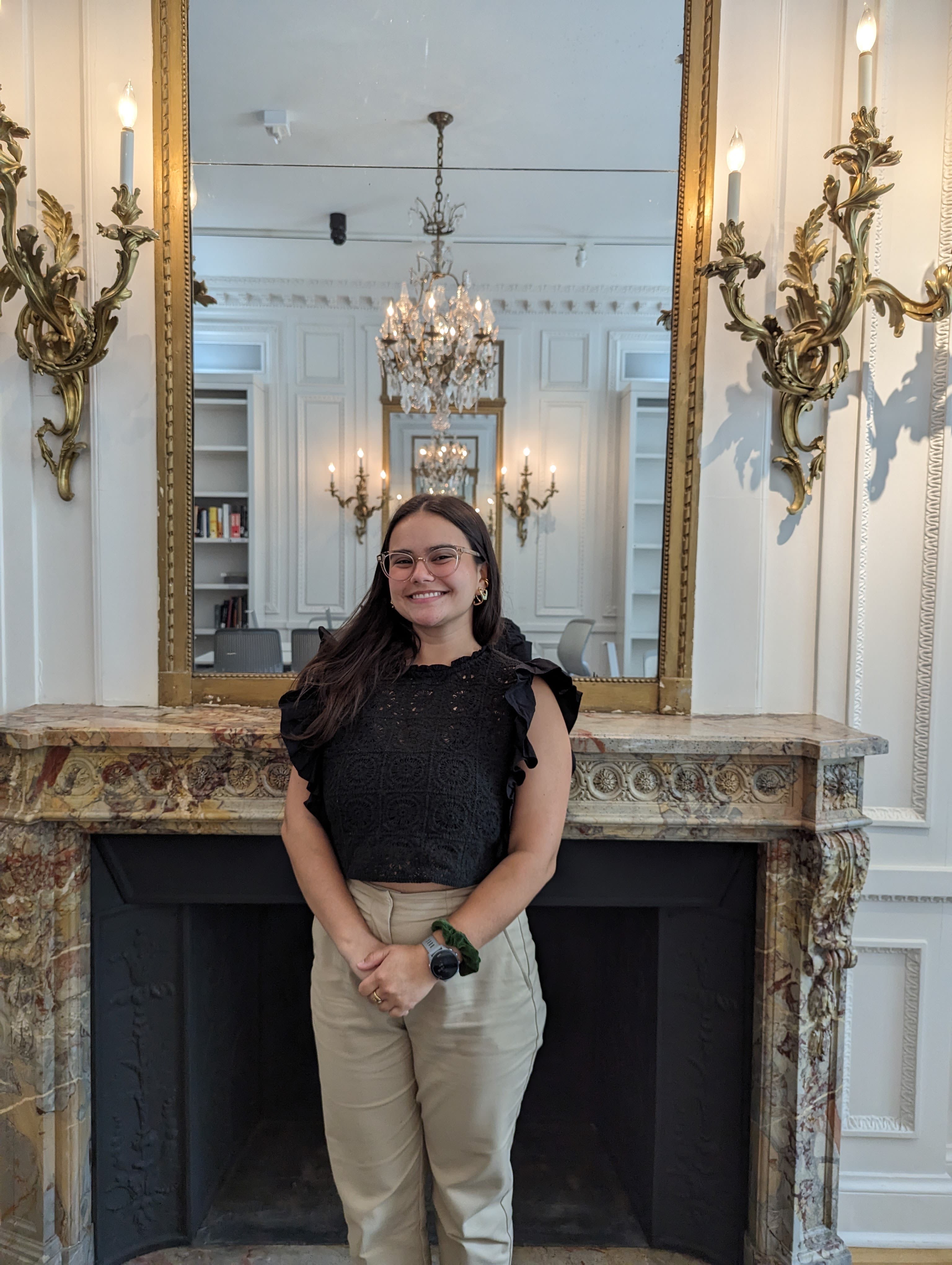
by Caitlin Cooner (MA 2025)
If you asked Alexandra Kader Herrera what her professional goals were before her first year at the School of the Art Institute of Chicago (SAIC), she would have a clear-cut answer.
She would take a gap year and work after graduating, obtain her PhD in art history, and become a professor or curator. Upon completion of her first year in SAIC’s Dual Degree: Master of Arts Administration and Policy and Modern and Contemporary Art History program and serving as a fellow for the Smithsonian National Museum of the American Latino, these plans have changed.
The Smithsonian Institution fellowship not only allowed Kader Herrera to put her skills as a researcher and administrator into practice, it also opened the door for her to reconsider what a career in the arts looks like. “I feel like this academic appointment has allowed me to put my arts administrator lens on,” Kader Herrera said. “It allowed me to be something aside from an art historian.”
Kader Herrera’s research interests lie in studying the art of US-based, female-identifying artists with Latinx backgrounds. So her fellowship—a partnership between the brand new Smithsonian National Museum of the American Latino and the Smithsonian Library and Archives—was a perfect fit. It was also a rare opportunity for Kader Herrera’s cohort of fellows to learn about how to build a museum from the ground up.
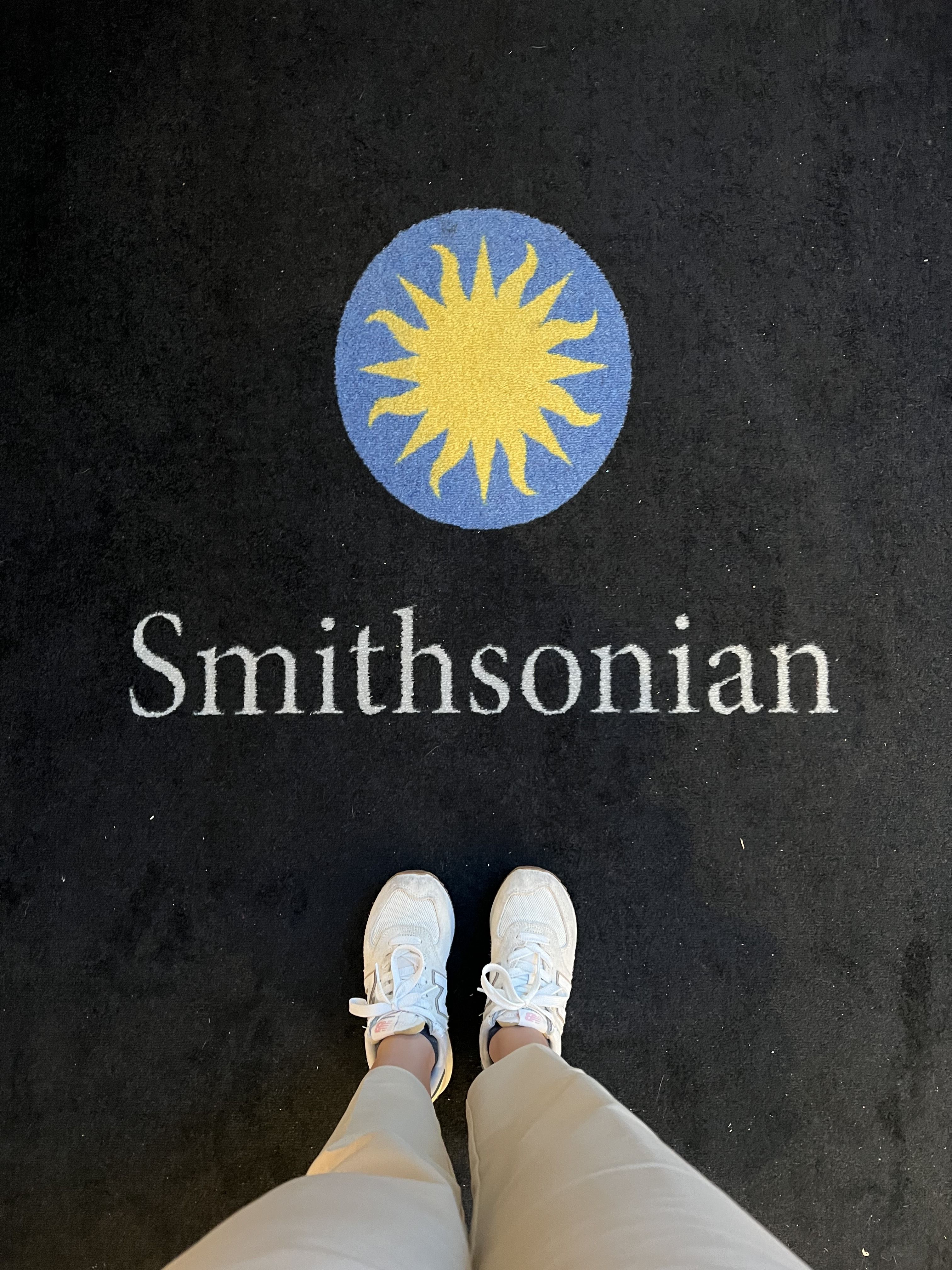
Kader Herrera at work. Image courtesy of Kader Herrera
Kader Herrera at work. Image courtesy of Kader Herrera
The fellowship consists of two components. First, cohort-wide gatherings bring everyone together to learn about museum administration within the Smithsonian Institution and tour various exhibitions. “[During the first week] we got five different tours of the same exhibition, but through different lenses. We went with the people who worked with Preservation and Collection, we had a tour of accessibility, and digital and technological innovation in the exhibition,” said Kader Herrera. “So, for me, that was like, wow, there’s so much that I don’t typically consider.”
The second component of the fellowship is an individual research project that culminates in a presentation at the end of the term. Kader Herrera’s work included combing through the databases of every Smithsonian Institution library to locate resources related to the American Latinx experience. She found books related to art, such as El Mosaico Mexicano in the Cooper Hewitt, Smithsonian Design Museum, as well as general sources about American Latinx culture such as Afro-Latin@s in Movement from the Smithsonian Institution archives. Thanks to Kader Herrera, these resources will become more visible to discovery through the Smithsonian Libraries and Archives web platform.
She also identified needed areas of research in the libraries and archives and made recommendations to support further growth of collections. As a Central American and Costa Rican, Kader Herrera is passionate about including more texts from this part of the world. She included multiple books and articles from Editorial Universidad de Costa Rica, such as Instrumentos de poder: el rol de las emociones en la opresión, a text which focuses on experiences of oppression.
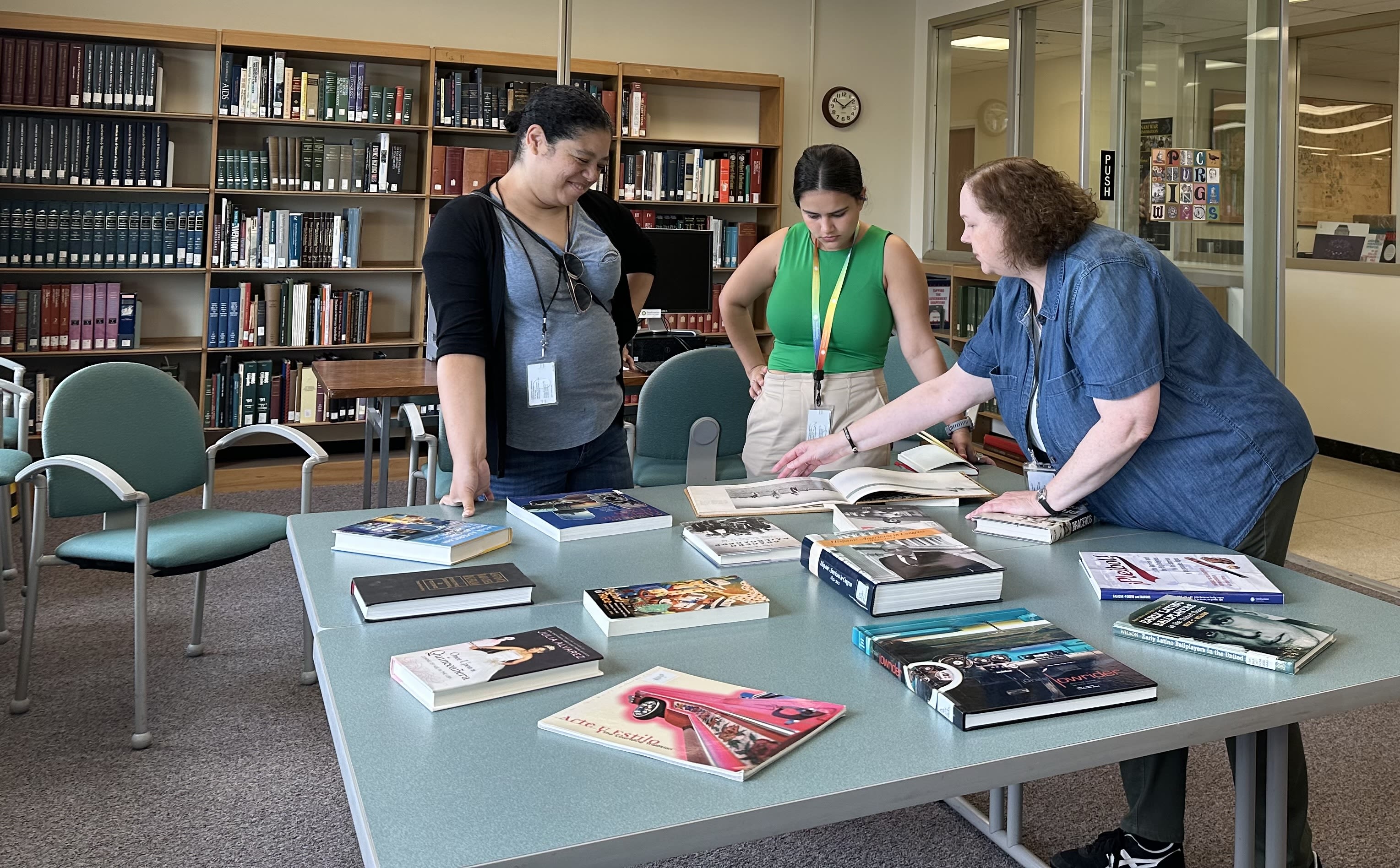
Kader Herrera reviewing publications. Image courtesy of Kader Herrera
Kader Herrera reviewing publications. Image courtesy of Kader Herrera
This internship not only allowed Kader Herrera to learn more about archiving and researching, it also informed her own art historical research methodology. “It’s just been really interesting because it has opened my eyes to that interdisciplinary nature of doing research,” Kader Herrera explained. “And also, my background is mostly art history, so sometimes we silo ourselves in art sources, like art magazines, art journals. But then all these different topics and sources can also inform our art historical analysis.” Throughout this project, Kader Herrera also discovered new contemporary artists such as Ilana Savdie, a Colombian American painter, and Muriel Hasbun, a Central American photographer working in D.C. She hopes to continue researching them during her time at SAIC.
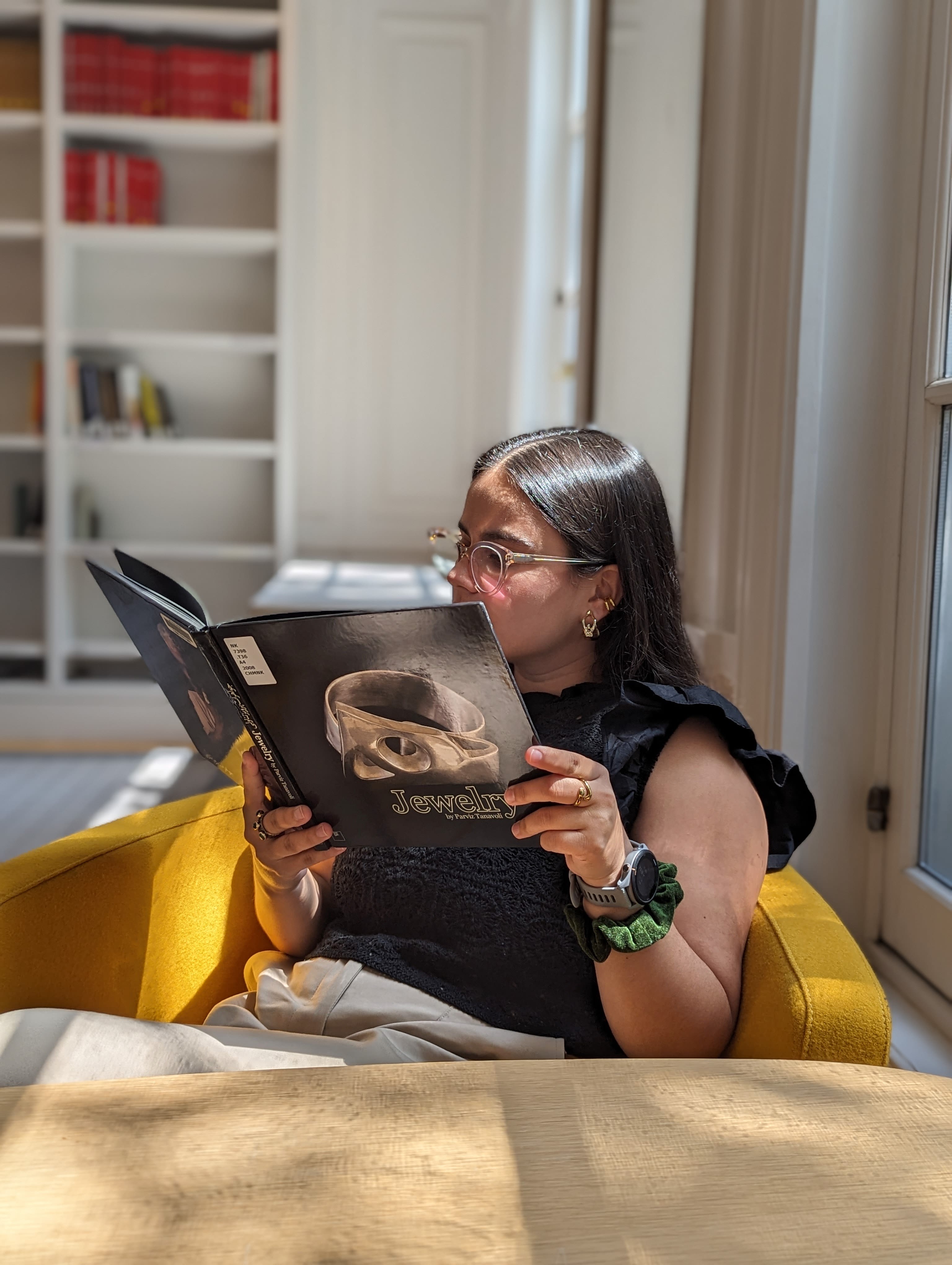
Kader Herrera taking in a text. Image courtesy of Kader Herrera
Kader Herrera taking in a text. Image courtesy of Kader Herrera
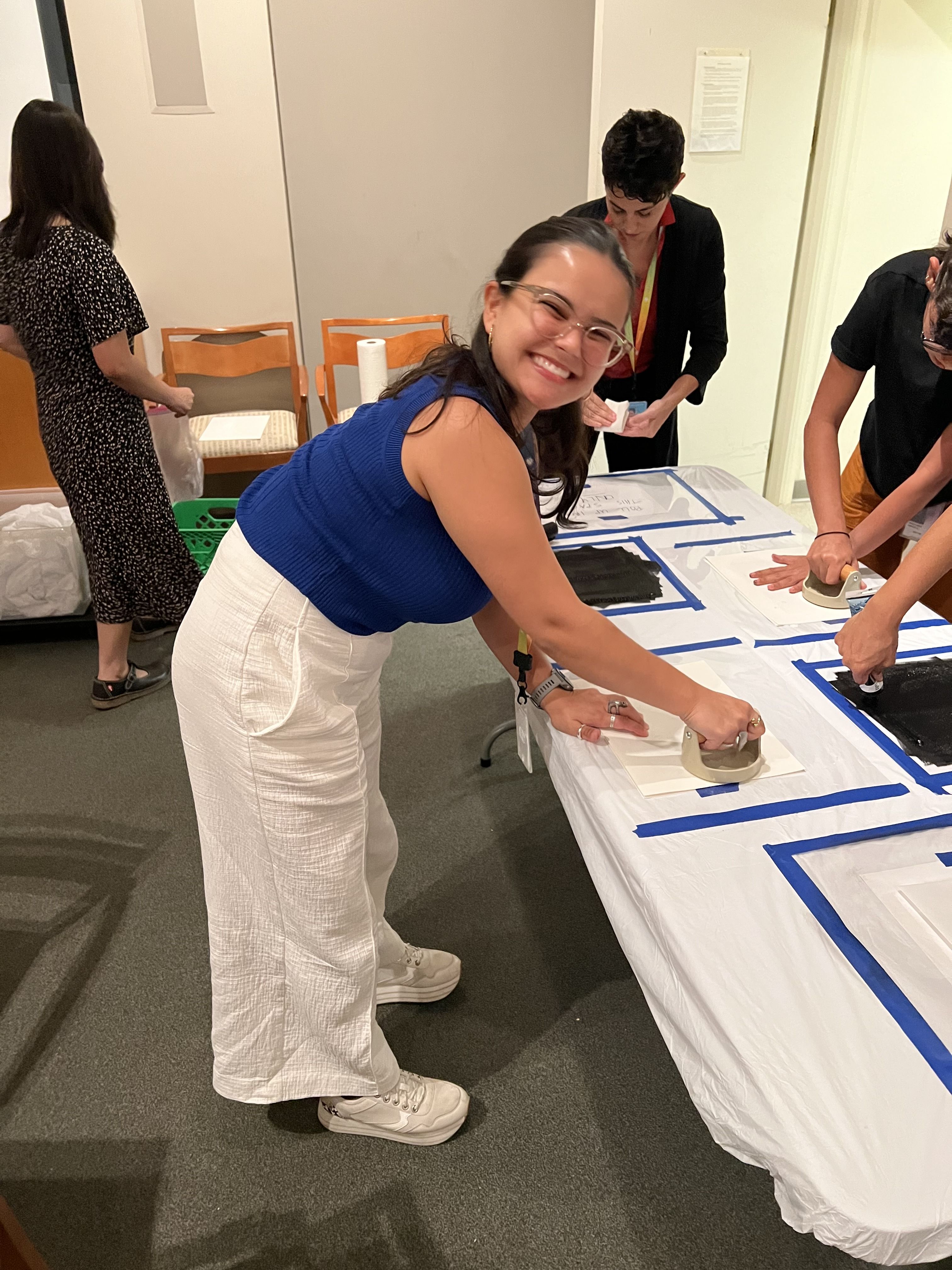
Kader Herrera on the job at her internship. Image courtesy of Kader Herrera
Kader Herrera on the job at her internship. Image courtesy of Kader Herrera
This fellowship was Kader Herrera’s first time working on art-related projects outside of an academic setting. She learned not only about museum administration, but also how to collaborate with others and transform projects into passions. As a result, she’s feeling more open to all of the possibilities that the future holds.
“A job description is just a point of departure, because the way that you do those different items is gonna depend a lot on your experience, and then these ideas are gonna change in a matter of days,” Kader Herrera said. “It’s been really a huge learning experience for me, and I’m just so grateful to be here and so happy.” ■
